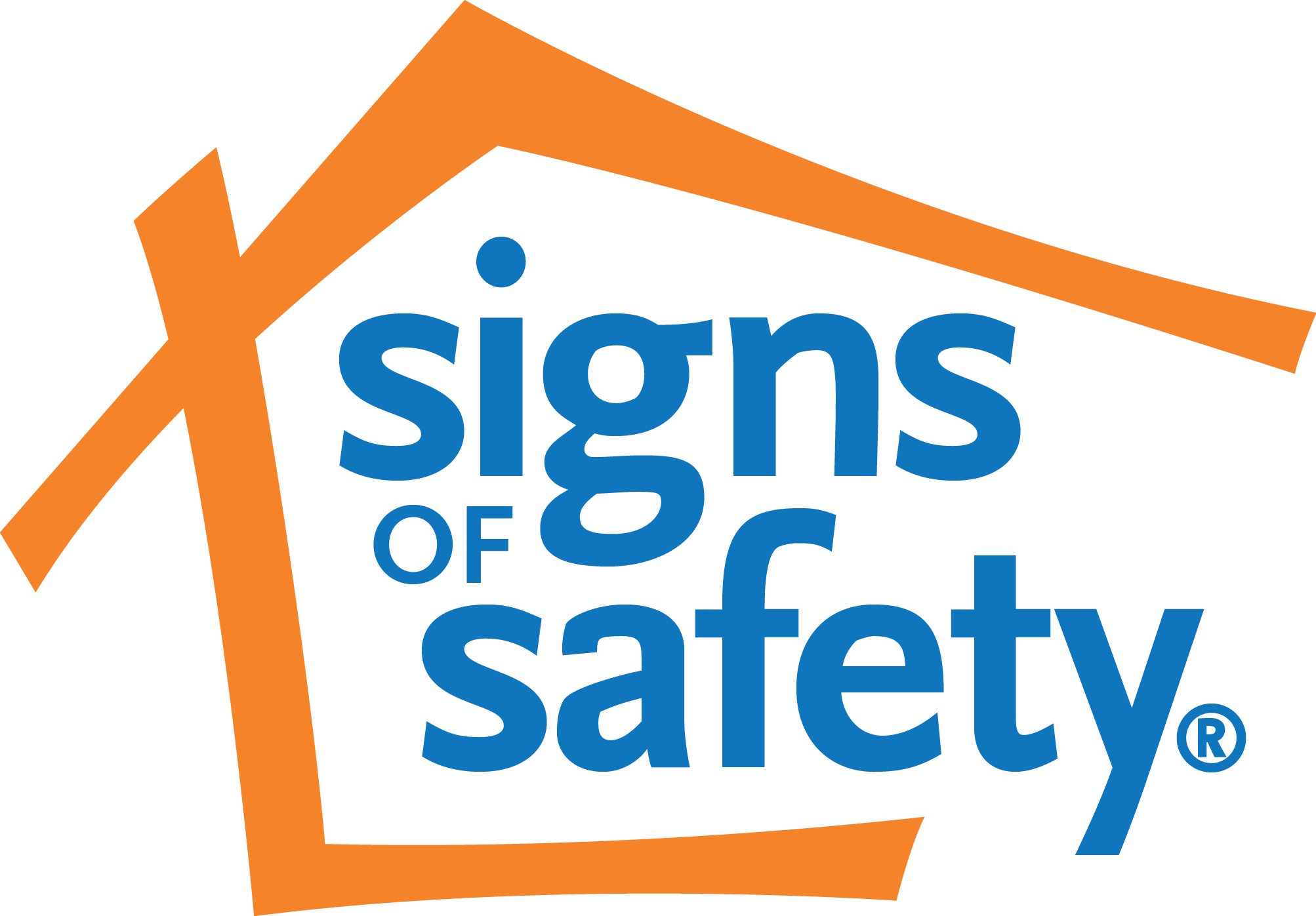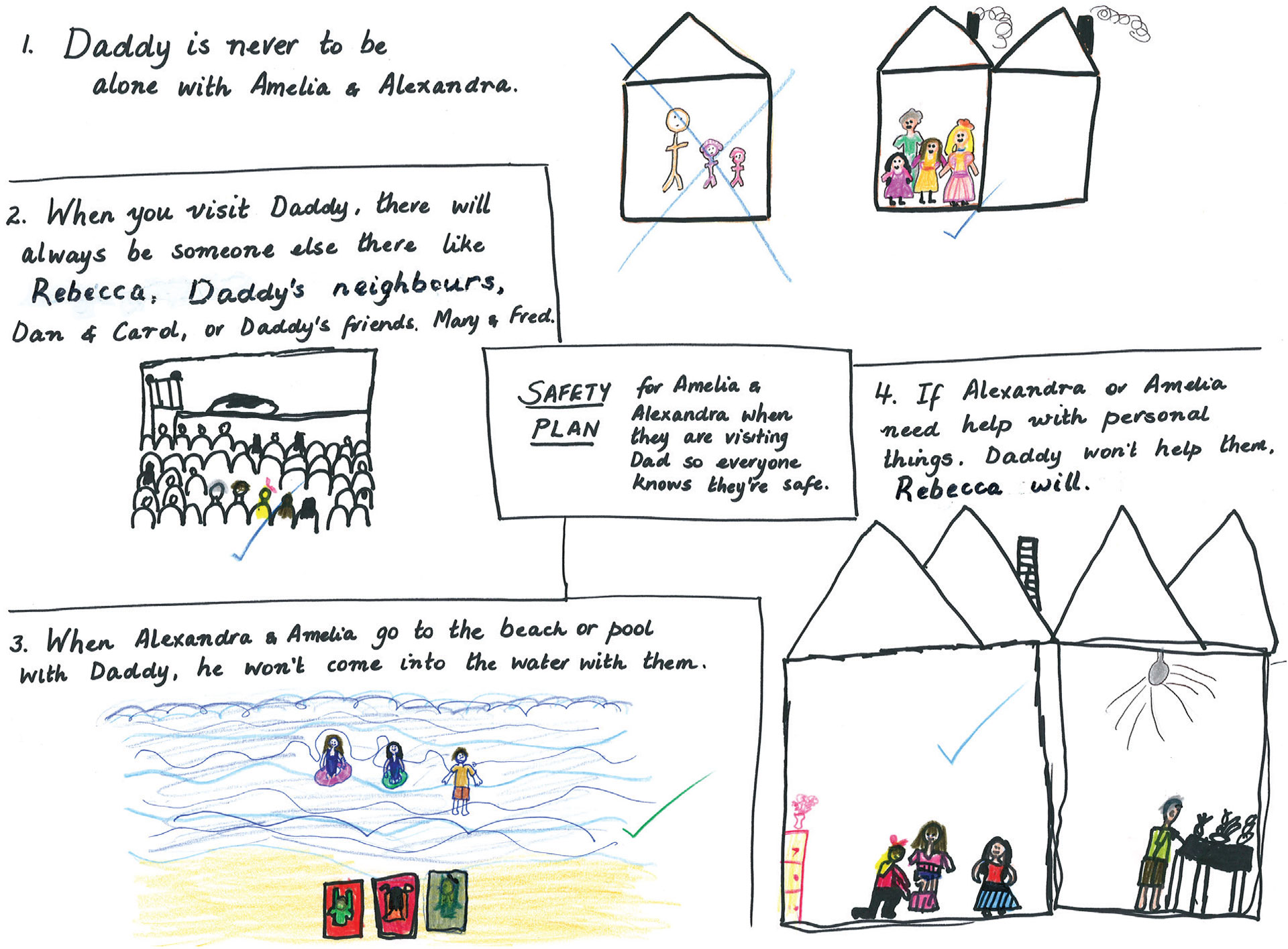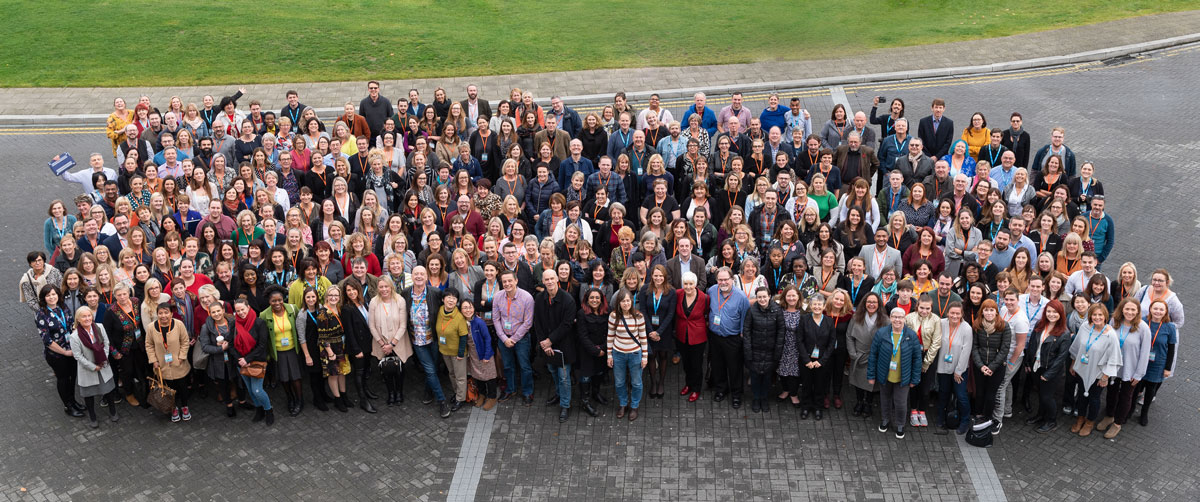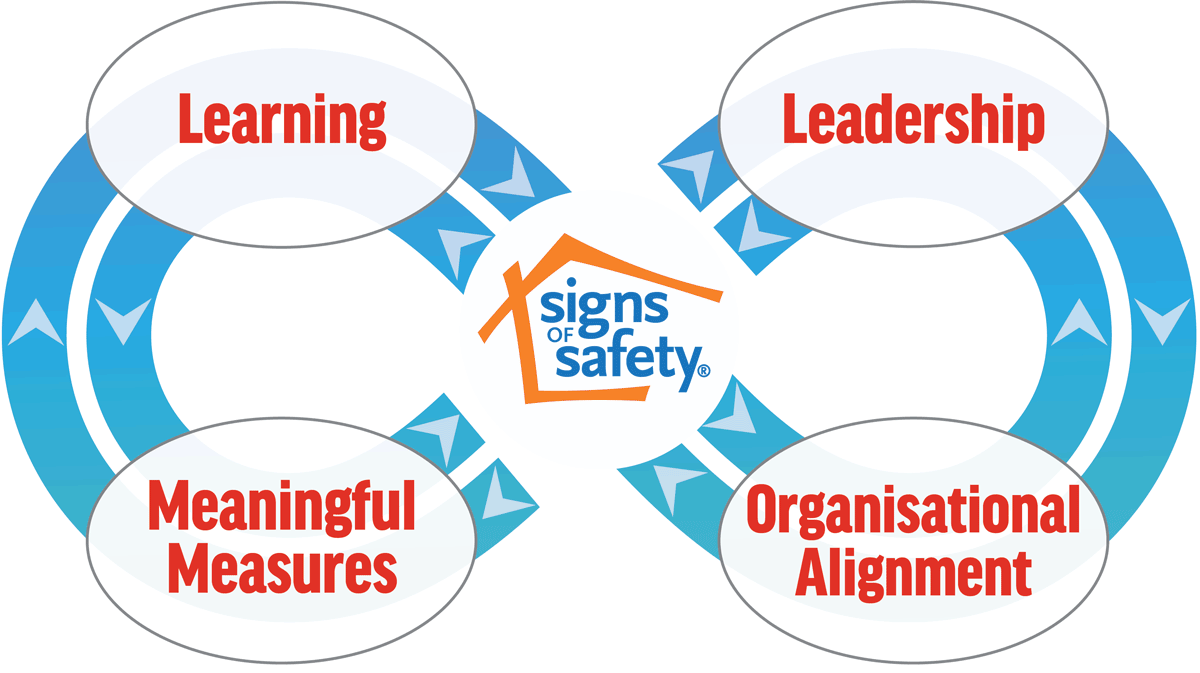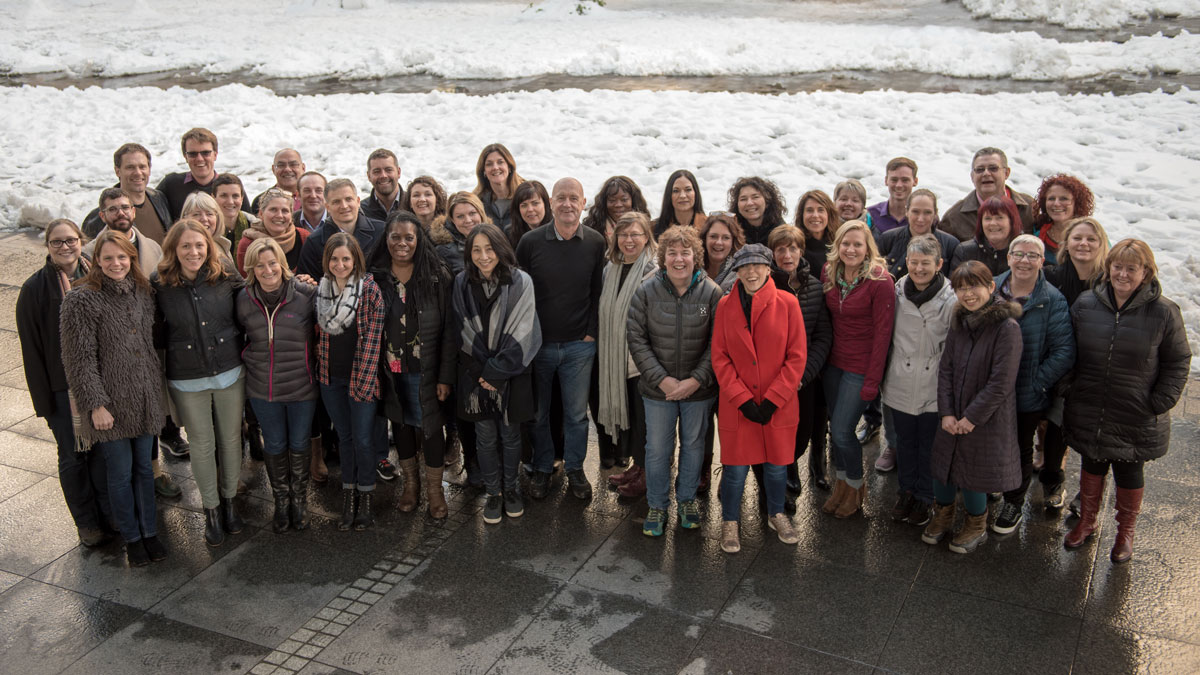The Signs of Safety® approach is a relationship-grounded, safety-organised approach to child protection practice, created by researching what works for professionals and families in building meaningful safety for vulnerable and at-risk children.
The Evolution of the Signs of Safety
The Signs of Safety approach to child protection casework was developed through the 1990s in Western Australia. It was created by Andrew Turnell and Steve Edwards, in collaboration with over 150 West Australian child protection workers (CPWs), and is now utilised in jurisdictions across North America, UK, Europe, Australia, New Zealand, Cambodia and Japan. The approach focuses on the question, ‘How can the worker build partnerships with parents and children in situations of suspected or substantiated child abuse and still deal rigorously with the maltreatment issues?’ The approach expands the investigation of risk to encompass family and individual strengths, periods of safety and good care that can be built upon to stabilise and strengthen a child’s and family’s situation. A format for undertaking comprehensive risk assessment — assessing for danger, strengths and safety — is incorporated within the one-page Signs of Safety assessment protocol. The approach is designed to be used from commencement through to case closure in order to assist professionals at all stages of the child protection process.
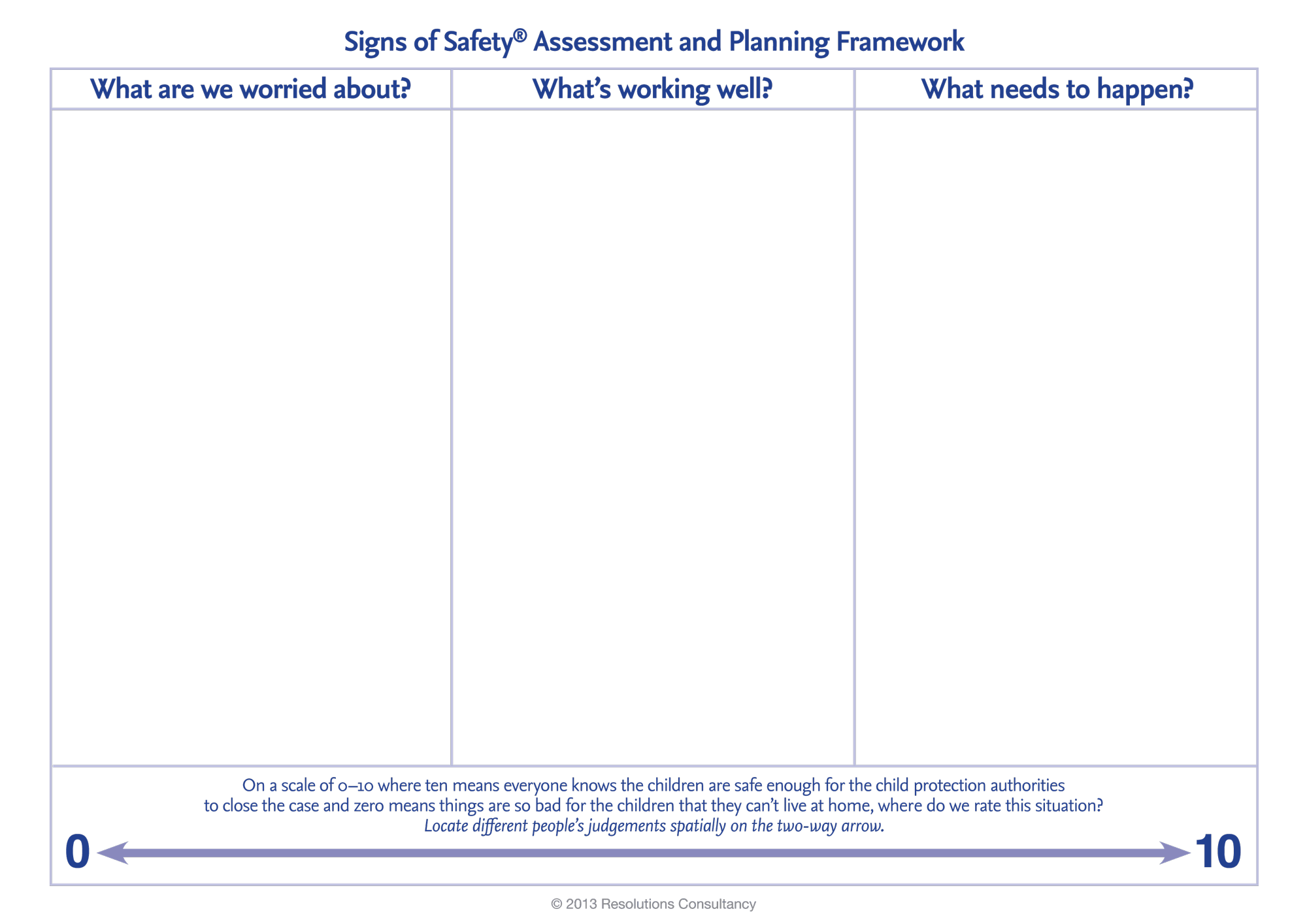
The impetus to create the Signs of Safety approach arose from Steve’s 16 years of experience as a front-line child protection practitioner, eight of those working primarily with Aboriginal communities. Steve was very dissatisfied with most of the models and theory regarding child protection practice that he encountered. Despite 16 years of front-line practice, Steve felt that most of the policy, guidance and books he read and the training he received was very distant from his experience of actually doing child protection work undertaking investigations, deciding when and how to remove children, dealing with angry parents, building safety and more. Because of this, throughout his child protection career, Steve always sought out new ideas that might better describe his experience of practice.
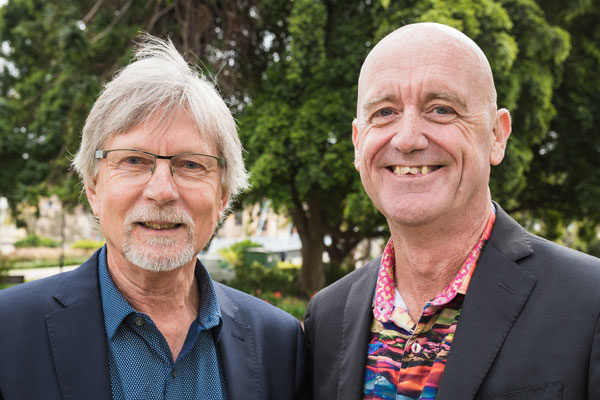
In 1989, Steve and Andrew began collaborating after Steve became interested in the brief therapy work Andrew was doing with families experiencing problems with their teenagers. Each week over the next three years Steve observed the brief therapy work from behind a one-way mirror and then began to apply brief therapy ideas and techniques into his practice as a child protection worker. The result of this collaboration between 1989 and 1993 was the beginning of the Signs of Safety approach.
In 1993, Steve and Andrew began working with other child protection practitioners; training them in what they had learned from the previous three years collaboration. Between 1994–2000, Steve and Andrew undertook eight six-month projects with West Australian child protection workers where the Signs of Safety approach to child protection practice was first created and refined. Following five days training in the first month of each project Steve and Andrew spent at least one day a month with the workers, focusing on where those practitioners had been using the approach and what had been useful for them, as well as exploring situations where they were stuck. By focusing on where workers were using the approach and finding success, Andrew and Steve learned directly from the CPWs about where, when and how the practitioners were actually able to use the Signs of Safety approach. Steve had always said that only the ideas, skills and guidance that the workers actually used would be included in the Signs of Safety model. This collaborative learning process formed the action research/appreciative inquiry method that first developed the Signs of Safety approach and has been utilised to continue to evolve the approach ever since.
Signs of Safety Terminology and Trademarks
Signs of Safety has evolved over the years from its first application to child protection to being increasingly used in all areas of children’s services. This is a brief guide to the adaptations that are protected by registered trademarks:
Signs of Safety®
Core risk assessment framework bringing the family and child into the centre of decision making and safety planning when there are concerns about child protection. Used by children’s services practitioners working with children and families.
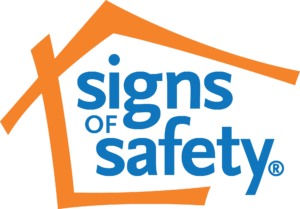
The Signs of Safety logo
Signs of Success®
This term is primarily used in the UK when working with children in out of home care, using adaptations of the Signs of Safety tools and techniques. In some jurisdictions it is used alongside Signs of Belonging® (see below). Signs of Success is also used in some jurisdictions in Youth Justice when working with for teenagers or young people in the justice system.

Signs of Success logo used in the United Kingdom

Signs of Success logo used in the Netherlands to represent Youth Justice
Signs of Belonging®
Signs of Belonging is an offshoot of the Signs of Safety approach focused on alternative care services for young people with the aim of encouraging the full participation of child/teenager, their parents and their naturally connected kin and network to maximise the possibility to get the child back home or into kinship care as quickly as possible and to best ensure the child remains connected to their family, culture and people if they remain in long term/permanent care).

Signs of Belonging used with Signs of Success in the United Kingdom
Signs of Wellbeing®
This term is used when working with children and their families where there are concerns about their welfare (children in need), but they do not meet the threshold for child protection. Broadly speaking this term applies to family welfare or family support services (Early Help in the UK) and children with disabilities. Adapted versions of Signs of Safety resources are used to work with the parents and their networks.

Signs of Wellbeing
Signs of Something
This is an umbrella term used to describe adapting the essential elements of the Signs of Safety framework to make an assessment beyond the usual application (for example, signs of an effective team) — it is not trademarked.
As a named entity, the Signs of Safety has been in use for over 25 years. It is a mature and still evolving approach. The practice approach and its methods continue to grow in their acuity and applicability across the entire continuum from intake and assessment to closure, within alternative care and permanency work and across the full spectrum of abuse profiles, complicating factors and populations that child protection work encompasses. The following are some of the important changes that have occurred within the Signs of Safety since the release of Turnell and Edwards’ 1999 book:
- Re-crafting the original assessment protocol into more widely used three-column version of the Signs of Safety risk assessment and planning framework
- Evolving and locating rigorous risk assessment process at the heart of the Signs of Safety practice framework (Turnell and Murphy, 2017)
- Incorporating and evolving numerous straightforward tools to place the child’s voice at the centre of Signs of Safety practice which involve children directly in assessment and planning (Turnell and Essex, 2006; 2013; Turnell 2011)
- Integrating and refining much more rigorous and systematic collaborative safety planning processes and tools, drawing particularly on the work of Susie Essex’s Resolutions approach to disputed child abuse (Turnell and Essex, 2006; 2013; Turnell, 2010; 2013)
- Developing adaptations of the approach beyond child protection including Signs of Wellbeing for family support services, Signs of Success (youth justice) and Signs of Belonging (out of home care)
- Evolving and integrating structured group supervision and appreciative inquiry processes for teams and agencies to sustain continuous learning that works in the application of the approach within their context.
With the publication of the Andrew and Steve’s book in 1999, the Signs of Safety began to draw increasing attention beyond Australia and became more widely used internationally. To enable the professionals and agencies using the approach to learn from each other Andrew and the Signs of Safety community began organising regular international gatherings beginning in 2005.
The Gatherings have been a vital part of the development of the Signs of Safety approach and are unique in the children’s services field. Professional conferences tend primarily to focus on expert voices from the academy, agency leaders and policy makers. By contrast, at Signs of Safety Gatherings, almost all presentations are given by front-line practitioners describing the details of Signs of Safety practice they are proud of sharing including the successes, struggles, specialities, refinements and variations of using and implementing the Signs of Safety approach. Signs of Safety Gatherings are always exciting and energising events, with practitioners and leaders hearing from their peers and from sister agencies from all over the world, and in this way the international community continues to keep growing the approach.
Transforming child protection practice and organisation
The Signs of Safety has always aimed to transform child protection practice, the purpose of the approach being:
To enable professionals to undertake all child protection practice with a rigorous focus on child safety by equipping agencies to establish their practice, policy, procedures and organisation so that professionals can do everything humanly possible to put the parents, children and everyone naturally connected to the children at the centre of the assessment, decision-making and planning and give them every opportunity to come up with and apply their ideas before the professionals offer or impose theirs. Full family and network involvement is always pursued whether the child lives permanently with or outside their biological family so that everything is done to enable the child to sustain lifelong connection with their family, culture and community of origin throughout all child protection involvement.
Placing parents, children and everyone naturally connected to the child at the centre of the assessment, decision-making and planning is a very significant paradigm shift for children’s services, where the dominant culture is for professionals to define the problems and what is required to solve them. Fully involving families in children’s services requires more than just adopting a participatory practice model since what practitioners do is always defined by organisational procedures, protocols, agency culture and leadership, recording systems and its quality assurance and compliance requirements. To realise the benefits that the Signs of Safety approach can bring to child protection practice and to changing outcomes requires a whole-system commitment to aligning the organisation to the participatory practice. This lesson has been learned repeatedly in organisations around the world that have sought to implement the approach. For this reason, the Signs of Safety community has focused considerable attention over the past decade on researching, designing and supporting whole-system change that aligns with the approach. The implementation framework that supports the Signs of Safety is illustrated in the following diagram.
More details about the Signs of Safety implementation framework and more information about all aspects of the approach can be found in the material listed in the selected bibliography below and also in the Signs of Safety Knowledge Bank.
The Signs of Safety international community
The Signs of Safety was created by Andrew Turnell and Steve Edwards and the approach has developed and matured over the past 25 years. In 2019 control of the Signs of Safety approach was transferred from Andrew Turnell to Elia, an international, not-for-profit organisation with a global membership of licensed Signs of Safety Trainers and Consultants. Elia has been established so that Signs of Safety can continue to evolve, led by a strong community of professionals committed to transforming child protection practice and systems so families and children can be placed at the centre of the work.
Signs of Safety Selected Bibliography
Baginsky, M., Hickman, B., Moriarty, J., and Manthorpe, J. (2019). Working with Signs of Safety: Parents’ perception of change, Child and Family Social Work, https://doi.org/10.1111/cfs.12673
Bunn, A. (2013). Signs of Safety in England: an NSPCC commissioned report on the Signs of Safety model in child protection. London: NSPCC.
Bunn, A., Taylor, L., Koziolek, D. and Turnell, A. (2016). What happens and what works in Signs of Safety with neglect. In R. Gardiner, Tackling child neglect: research, policy and evidence-based practice.London: Jessica Kingsley.
Gardeström, A. (2006). Signs of Safety på svenska: goda exempel i utredningsarbete. In M. Söderquist. & A. Suskin-Holmqvist, A. (Eds.), Delaktighet – Lösningsfokuserat förhållningssätt i utredningsarbete. Stockholm: Mareld.
Lwin, K. Versanov, A., Cheung, C., Goodman, D. and Andrews, N. (2014). The use of mapping in child welfare investigations: a strength-based hybrid intervention. Child Care in Practice 20(1): 81–97.
Munro, E., Turnell, A., and Murphy, T. (2016). You can’t grow roses in concrete: action research report Signs of Safety English Innovations Project. Perth: Munro, Turnell and Murphy. Available at https://knowledgebank.signsofsafety.net/resources/signs-of-safety-research/research-articles/you-can-t-grow-roses-in-concrete
Munro, E., and Turnell, A. with Devine, M., and Cunliffe, J. (2020). You can’t grow roses in concrete Part 2: action research final report Signs of Safety England Innovation Programme. Perth: Elia International Ltd. Available at https://knowledgebank.signsofsafety.net/resources/signs-of-safety-research/research-articles/you-cant-grow-roses-in-concrete-part-2
Munro, E. and Turnell, A. (2018). Redesigning organisations to facilitate rights-based practice in child protection. In A. Falch-Eriksen and E. Backe-Hansen, Human rights in child protection: implications for professional practice and policy. London: Palgrave.
Roberts, Y. H., Caslor, M., Turnell, A., Pecora, P. J., & Pearson, K. (2018). An international effort to develop a fidelity measure for the Signs of Safety® approach to safety and risk assessment in child protective services. Research on Social Work Practice, 28*(1):* 1–10.
Salveron, M., Bromfield, L., Kirika, C., Simmons, J. Murphy, T. and Turnell, A. (2015). ‘Changing the way we do child protection’: The implementation of Signs of Safety within the Western Australian Department for Child Protection and Family Support’. Children and Youth Services Review, 48: 126–139.
Skrypek, M., Idzelis, M. & Pecora, P. (2015). Listening to parents: Lessons from implementing ‘Signs of Safety’ in child protective services. Social Work Now 52: 29–37.
Turnell, A. and Edwards, S. (1999). Signs of Safety: A safety and solution-oriented approach to child protection casework, New York: WW Norton.
Turnell A. and Essex S. (2006). Working ‘denied’ child abuse: the resolutions approach. Buckingham: Open University Press.
Turnell A. and Essex S. (2013). It takes a village: placing grandparents and extended family at the centre of safeguarding vulnerable children. In David Pitcher (ed.), Inside kinship care: understanding family dynamics and providing effective support. London: Jessica Kingsley.
Turnell, A., Elliott, S. and Hogg, V. (2007). Compassionate, safe and rigorous child protection practice with parents of adopted children. Child Abuse Review, 16*(2):*108–119.
Turnell A., Lohrbach, S. and Curran, S. (2008). Working with the ‘involuntary client’ in child protection: lessons from successful practice, pp. 104–115. In M. Calder (Ed.) The carrot or the stick? Towards effective practice with involuntary clients, London: Russell House Publishing.
Turnell, A. (2004). Relationship-grounded, safety-organised child protection practice: dreamtime or real-time option for child welfare? Protecting Children, 19*(2):* 14–25.
Turnell, A. (2006). Constructive Child Protection Practice: An oxymoron or news of difference? Journal of Systemic Therapies, 25*(2):* 3–12.
Turnell, A. (2011). Of houses, wizards and fairies: involving children in child protection casework (DVD and Workbook). Perth: Resolutions Consultancy.
Turnell, A. & Murphy, T. (2017). Signs of Safety Comprehensive Briefing Paper (4th Edition) Resolutions, Perth. Resolutions.
Turnell, A., Munro, E. and Murphy, T. (2013). Soft is hardest: leading for learning in child protection services following a child fatality.Child Welfare,*92(*2): 199–216.
Turnell, A., Pecora, P.J., Roberts, Y.H., Caslor, M. and Koziolek, D. (2017). Signs of Safety as a promising comprehensive approach for reorienting CPS organisations’ work with children, families and their community supports. In M. Connolly (Ed.), Beyond the Risk Paradigm in Child Protection. London: Palgrave, Macmillan Education.
Turnell, A., Vesterhauge-Petersen, H. and Vesterhauge-Petersen, M. (2013). Signs of Safety: arbejdet med udsatte børn og deres familier. Copenhagen: Hans Reitzels Forlag.
Vogel, M. and Wiggerink, J. (2014). The power of partnership: How to use the Signs of Safety in child protection casework (30-minute video). Assen: Bureau Jeugdzorg Drenthe.
What Works Centre for Children’s Social Care, (2018). Signs of Safety: Findings from a mixed‐methods systematic review focussed on reducing the need for children to be in care. Cardiff: What Works Centre for Children’s Social Care.
Wheeler, J. and Hogg, V. (2011). Signs of safety and the child protection movement, in Cynthia Franklin, Terry S. Trepper Eric E. McCollum Wallace J. Gingerich, (eds.), Solution-focused brief therapy: a handbook of evidence-based practice, New York: Oxford University Press USA.
